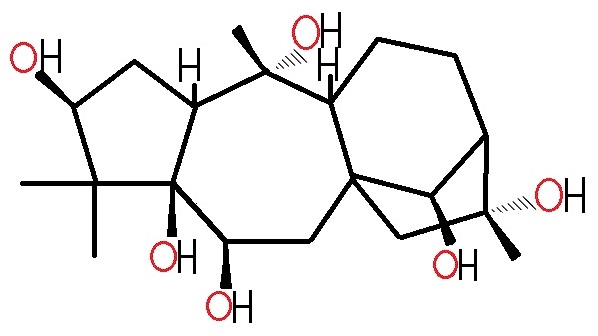Andromedo-toxin
 Potentially toxic chemicals,
andromedo-toxins, are present in substantial
amounts in Rhododendron ponticum. These chemicals
include 'free' phenols and diterpenes.
The diterpenes, also known as grayanotoxins, are mainly found in the
leaves, flowers, and nectar. The phenols are typically found in
new tissues. The toxins affect the sodium channels by blocking them
and preventing voltage-dependent inactivation in the cell membrane,
leaving cells depolarized.
Potentially toxic chemicals,
andromedo-toxins, are present in substantial
amounts in Rhododendron ponticum. These chemicals
include 'free' phenols and diterpenes.
The diterpenes, also known as grayanotoxins, are mainly found in the
leaves, flowers, and nectar. The phenols are typically found in
new tissues. The toxins affect the sodium channels by blocking them
and preventing voltage-dependent inactivation in the cell membrane,
leaving cells depolarized.

Animals, such as sheep and cattle, can become poisoned after ingesting the toxic chemicals from Rhododendron ponticum. However, it typically requires the organism to intake a substantial amount of the chemicals. Since the leaves are unpalatable to these animals, the animal is typically starved and therefore desperate for food.
 Honey-intoxication
Honey-intoxication
When humans are poisoned by the toxins in Rhododendron
ponticum, it is typically because they consumed honey products
from Rhododendron ponticum flowers. This is known as
Honey-intoxication or Mad Honey Disease.
Symptoms include intestinal and cardiac problems, and rarely
death. The level of severity is dependent upon the amount of
chemicals consumed. To treat most cases, replenishing fluids and
taking a low dose atropine is typically adequate.
©Waugsberg 2007
.jpg)